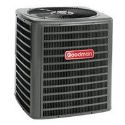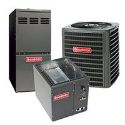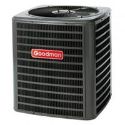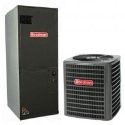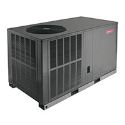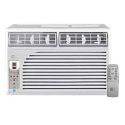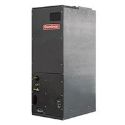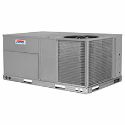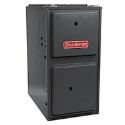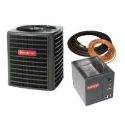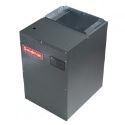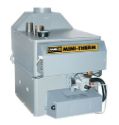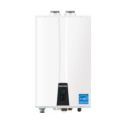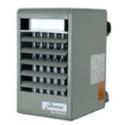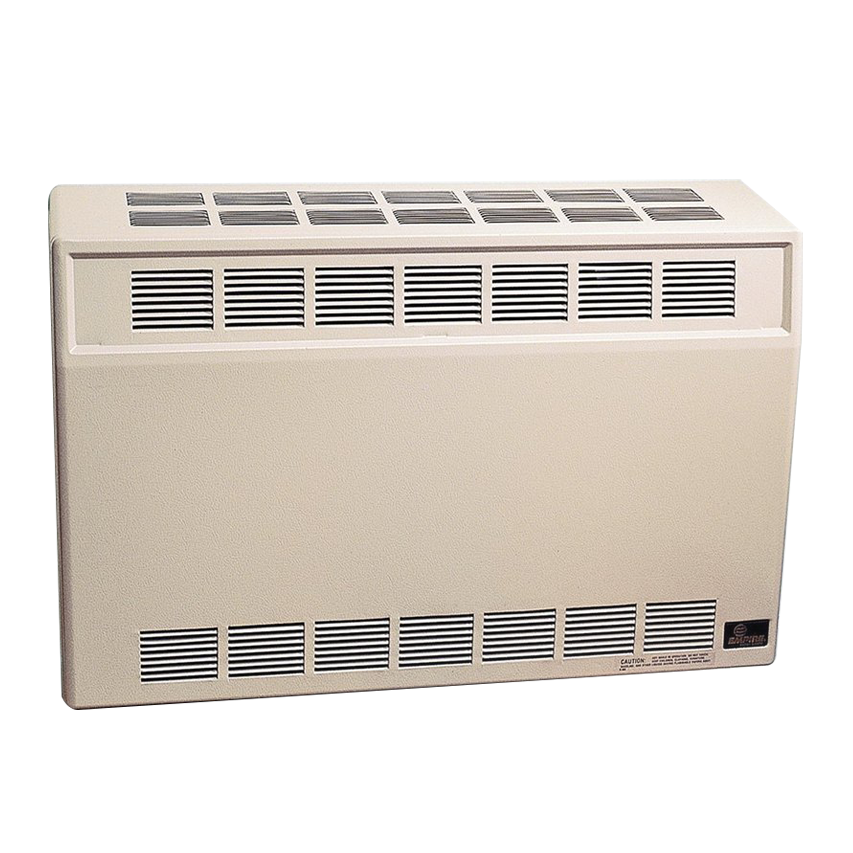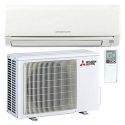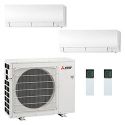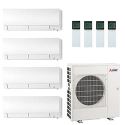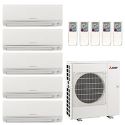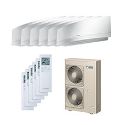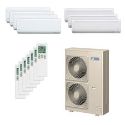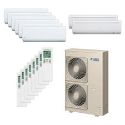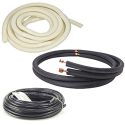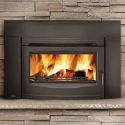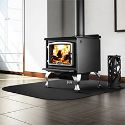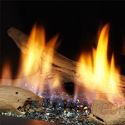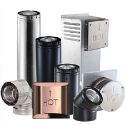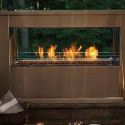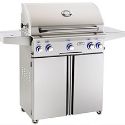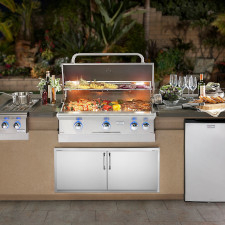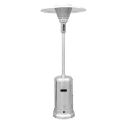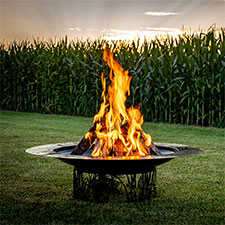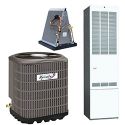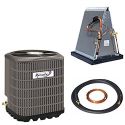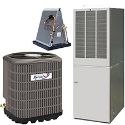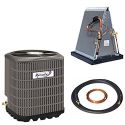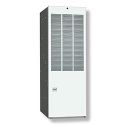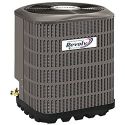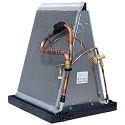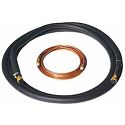 WHAT YOU NEED TO KNOW ABOUT FILTERS
WHAT YOU NEED TO KNOW ABOUT FILTERS
A furnace filter is a very important part of an HVAC system. Replacing regularly will not only improve the quality of air in your home but will also prolong the life of your furnace. Not taking care of the filter will result in greatly increased health risks due to air contamination and a shorter life span of the furnace.
WHAT TYPES OF FILTERS ARE THERE?
The most common type of filter would be the 1” filter which can be found at a local hardware store. The main benefit of a 1” filter is the small size since in some scenarios there is not enough space for a larger, more efficient filter. These come in a variety of sizes as well as MERV ratings. MERV stands for Minimum Efficiency Reporting Value and the higher the number the cleaner it will make the air, it will also restrict air flow with the high MERV ratings. Most of the 1” filters are around MERV 8 but can go up to MERV 13. HEPA filters are great for cleaning air but normally would restrict airflow too much for the furnace. There are a few HVAC specific HEPA filters that you can find with a company like Clean Comfort.

The other type of filter that is common is the 5” thick filter which will allow for a better cleaning of the air, a higher MERV rating, and has a longer replacement period. You can find a few different sizes along with the rack it goes in here. Another benefit of the thicker filters is the rack they go in would be able to support the weight of the furnace unlike most 1” filter racks. Most 5” racks have a door you can pull off for easy access to replace filter.

There are two mainstream materials they use to make the actual filter part, Fiberglass and Synthetic.
- Fiberglass has been around the longest and can be made very dense giving them one of the most powerful efficiencies available (HEPA Filters use this). These are typically a Media type filter (as opposed to pleated)
- Synthetic filters offer slightly more of a cost savings option as well as extra durability. These are more common in the automotive industry but still have their place in HVAC. They save money by not having to be replaced as often
Three other less common types are Carbon Filters and UV Light filters and Electronic Filters.
- Carbon filters (pictured above) are very efficient and are known for their ability to remove smells like smoke and other odors. The downfall of carbon filters is their price.
- UV Light filters are used for killing germs, mold and other organisms, which does not stop them from being in the air, but it will stop them from growing excessively.
- Electronic filters are a great long-term choice if you are ok with cleaning them. They have two metal plates which are electrically charged to attract dust particles, it also has two meshes to catch the big stuff. These filters should be able to last indefinitely but you will have to take the plates out and clean them which can take a little time and be quite filthy depending on how dirty your air was. They also have a rather large upfront cost.
Here is a table with a quick overview of filter types
| Fiberglass | Powerful efficiency, Industry standard |
| Synthetic | Cost effective, very durable |
| Carbon | Slightly higher expense, removes smells, efficient |
| UV light | Does not catch particles, Kills germs, mold, other organisms |
| Electrically charged | Can keep forever, A hassle to clean, high upfront cost |
WHERE DO THE FILTERS GO?
There is some variety in the placement of filters, for the most part a filter would be attached to the furnace with the return attached to the filter. For an up-flow configuration, you can have the return air flowing through a filter on the sides or up through a filter on the bottom. The up-flow configuration is one of the most versatile, allowing you to attach 1, 2, or even 3 filters with return air ducts attached.

With the filter attached to the furnace the return air duct would transition to the size of the filter. A horizontal configuration is relatively the same as the up-flow configuration except that it is laying down on its side. You can still attach return ducts and filters to the “sides” and “bottom”.
Where you may run into trouble is with a down-flow system. They are not as versatile in their ability to connect return ducts with it mostly being restricted to coming in straight from the top. Many scenarios would use a plenum box on top with branching ducts.

You can also attach return air duct to a support box which is just a sheet metal box for the furnace to sit on. The main reason for a support box setup is if you want to have the return air come in through the bottom and you want to use a 1” filter since a 1” filter rack could not support the furnace weight. Another reason would be to make the furnace taller.
On a 2 in 1 air handler (blower and evaporator coil together) usually, there is already a 1” filter slot attached. However sometimes it is on the supply side, which is not the end of the world, but it is recommended to buy a separate rack/filter to put on the return side.

WHY ARE THERE SO MANY SIZES?
A residential home needs is return with a filter, sometimes two, if it is a 2000 cfm model furnace. A Duct Sizing Chart can help you determine what size return duct you would need based on the CFM of your furnace. For example, a furnace with 1200 CFM capabilities could use a 30”x10” or 24”x12” size duct returns. As long as the filter is equal to or exceeds that size you would have adequate airflow to the furnace. If it is not large enough, you risk the furnace overheating (or freezing the evaporator coil when cooling) due to the restricted air flow.
Another factor to consider is MERV ratings. If you have a high MERV then it will restrict the air flow causing a drop in static pressure so you would need a larger duct and filter to alleviate the problem.
CARING FOR YOUR FILTER
Caring for your furnace means caring for your filter and caring for your filter means caring for your respiratory health. Every filter will have a different replacement period. 1” filters are usually 2 months and sometimes up to 3 months. 5” filters can last up to a year before needing replaced. Some factors come into play to determine replacement time, these would be how dirty the house is like with pets or a lot of people, as well as how often the blower on the furnace pulls air through the filter.
The best way to determine if it needs replaced is to look at it. Below are a few examples
Bad things will happen if you do not replace a clogged furnace or if you decide to not have a filter at all. If the filter is fill of dust it will not let air pass through, if air cannot pass through then the heat cannot be moved away from the furnace and the furnace will overheat and parts will start flying!! Ok parts will probably not start flying but you will have some costly repairs on your hands. If there is no filter, then dust will accumulate in the furnace and dust traps heat causing problems or it will collect on your evaporator coil both causing a costly cleaning or repairs.
You may have also heard of vacuuming or washing a filter. It is not recommended unless you are in a pinch, the materials do not hold up after being wet, and vacuuming will only temporarily relieve the airflow problem since you will not be able to get most of the small particles out of the filter.
So, although a filter seems like an add on, it is in fact a crucial component in a complex system. It can be your best friend or a dangerous foe, all it wants is periodic attention. IGNORE IT AT YOUR OWN PERIL!
 Shopping Cart
Shopping Cart



